In the picture below
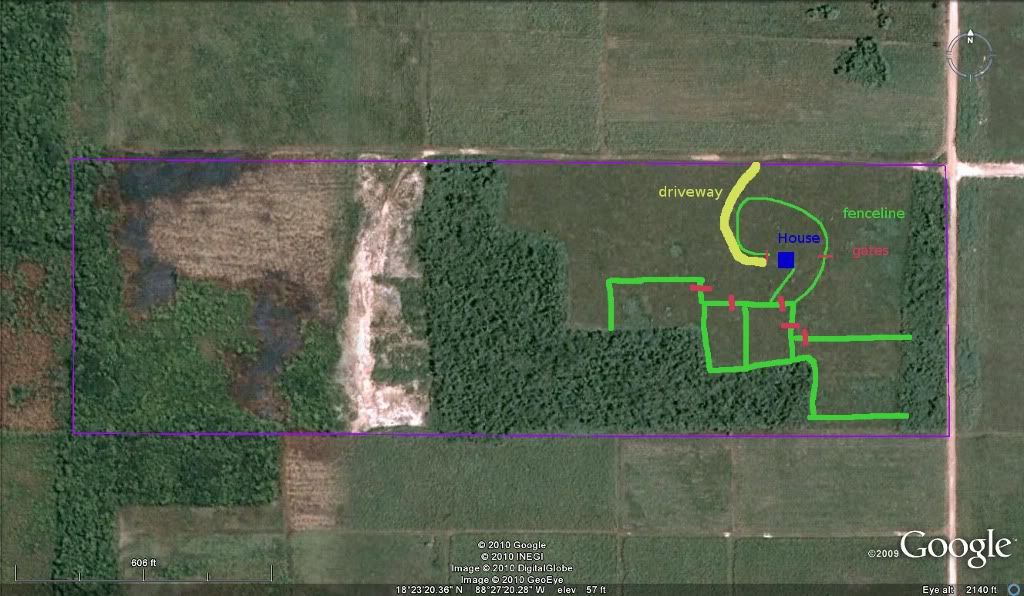
The green line is electric fence line. Red marks are where gates are or will be. Blue is the House. And Yellow is the driveway. All these locations are more less accurate. The image is a satellite image from 2008 that I got from Google earth. If it is too small, you can click on it and get a bigger image.
The paddocks are the green boxes.
But what is actually happening down here on the ground is a bit more complicated than lines on an image. The meadow is high bush, not forest, but well on its way to becoming a forest. There are a lot of pioneer trees in the meadow, and the grasses and such were taller than me at the end of the rainy season last year. Out of this we are carving pastures for the sheep.
I should perhaps describe how we do this. We are out there with machete in hand chopping and clearing brush. However, we chop and clear far less than might be imagined. The sheep do most of the hard work.
First of all, much of the meadow is incredibly rocky. Locals who visit are impressed by the density of stone and rocks we have and expect we are pleased with this. They mention that we have plenty of rocks to build more buildings as we need them. Belizeans often tend to only see the bright side. Gardening other than zen rock gardening requires careful selection of the site in the meadow.
There are areas that are largely free of rocks, have good deep soil and are close to the house. These are not areas where we want to put sheep normally as the sheep can handle any amount of rocks as long as grass will grow. So the first step is for the decision maker of the family to go and look at the ground and decide if it should be for sheep or garden.
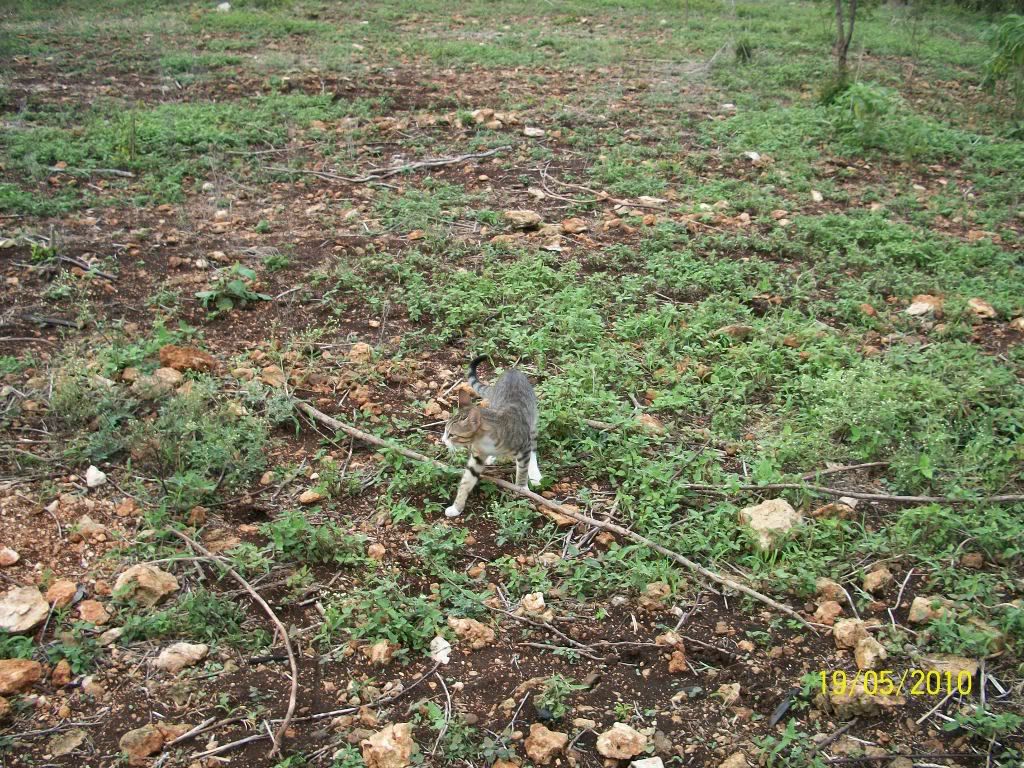
The pictures below indicate the typical amount of brush in an area selected for a paddock.

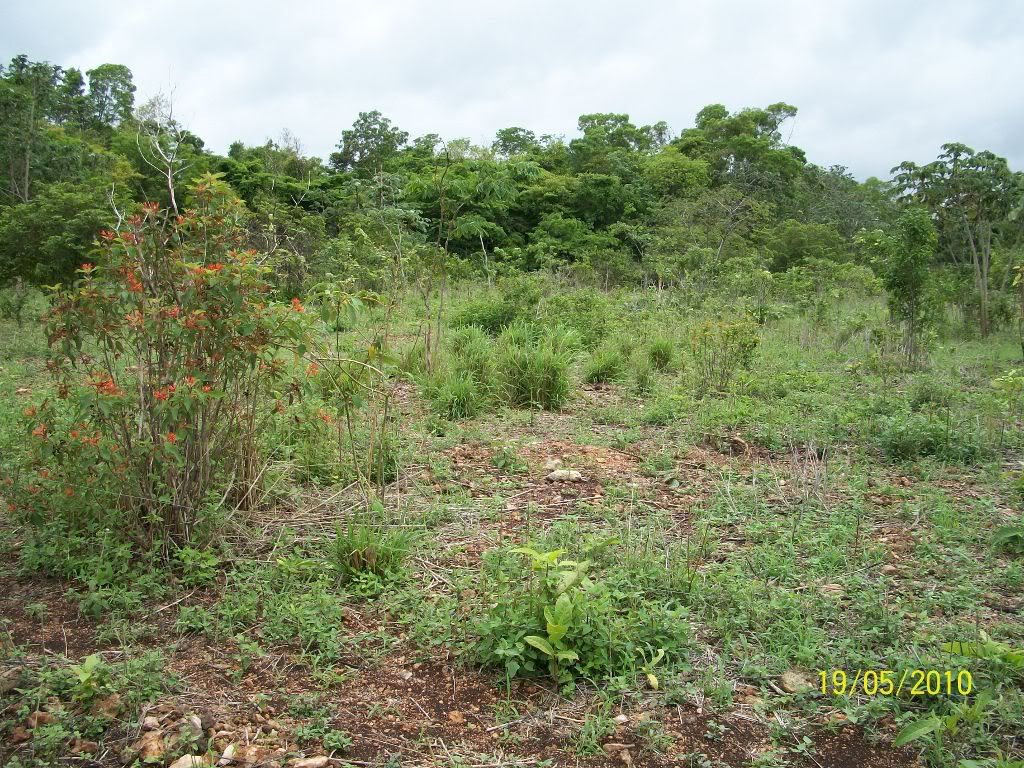
The next step is to put in temporary posts. These are just long sticks about as thick as the digging bar. We use the digging bar to punch a hole anywhere from one to two feet deep and put in the stick. To this stick, we attach one insulator at about two feet from the ground. We used to use two wires, but are trying to get away with only one now. The insulators are a section of one inch pvc pipe with two holes burned through with a hot nail to allow the wire to pass through.
We put these temporary posts about every 32 feet or anywhere the fence line has to turn or curve. We like temporary posts because we can put them in with little effort. We often don't know exactly where we want a fence line and to put in full blown post holes and trees as living posts requires some certainty we won't want to change it latter.
I mentioned we chop and clear. It is this temporary fence line that we have to clear well enough that no brush or weeds hits the wire that is about two feet off the ground. If any weeds touch it, the wire shorts out and the voltage on the entire fence system is reduced.
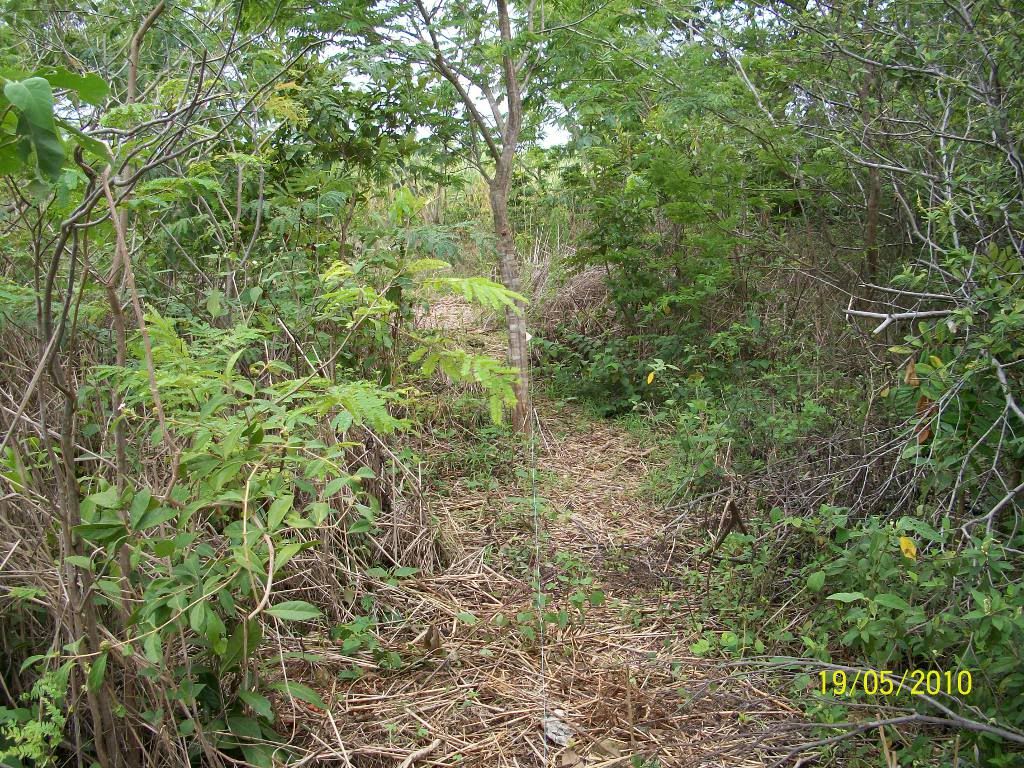
Next we string up one single strand of smooth galvanized steel wire. Sheep normally need more than one strand, but we feel lucky. Actually, it is usually only one sheep that will play escape artist. We catch them, put them back in, and eventually they seem to learn to stay inside. Last night we were catching or chasing Gray back into the paddock about five times in the mosquito infested dark. But to be able to use one wire simplifies many things and is worth some effort at training the sheep.
After that we add a gate composed of a wire with a pvc handle to close it. Then we turn the sheep loose inside the paddock.
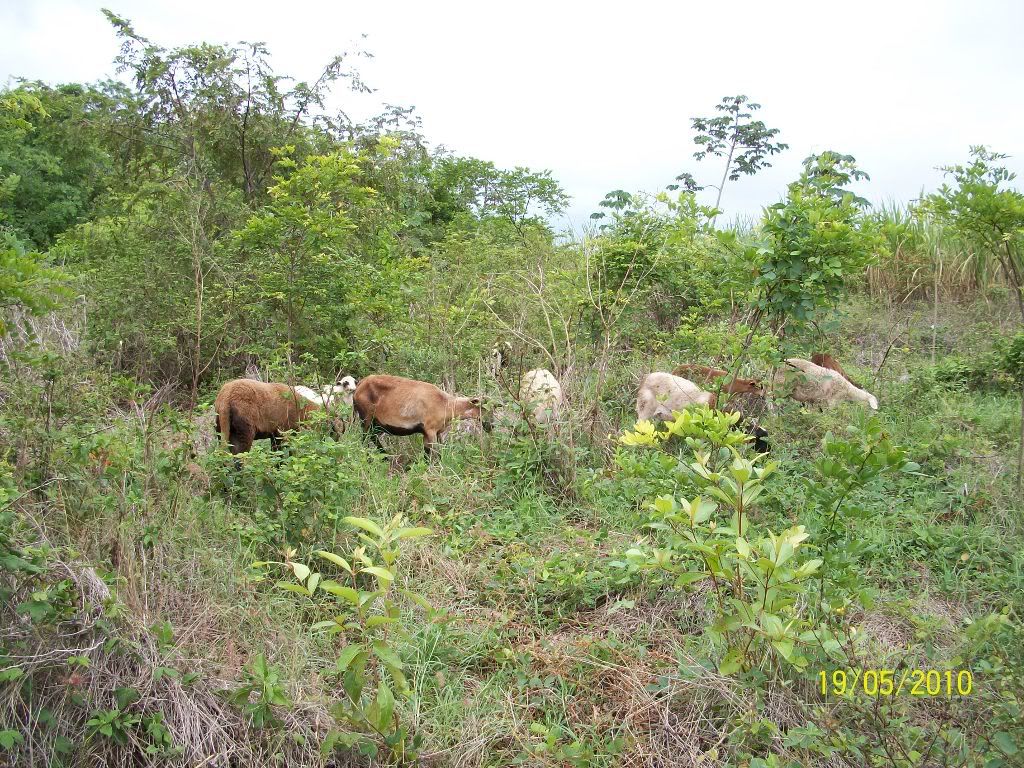

The sheep go to work eating small trees and weeds. They trim the grass back and prune the wild bean vines. But also they knock down much of the dead grass and other dead vegetation. They clear the land fairly effectively by eating everything.
All the sheep are enlisted in this effort.
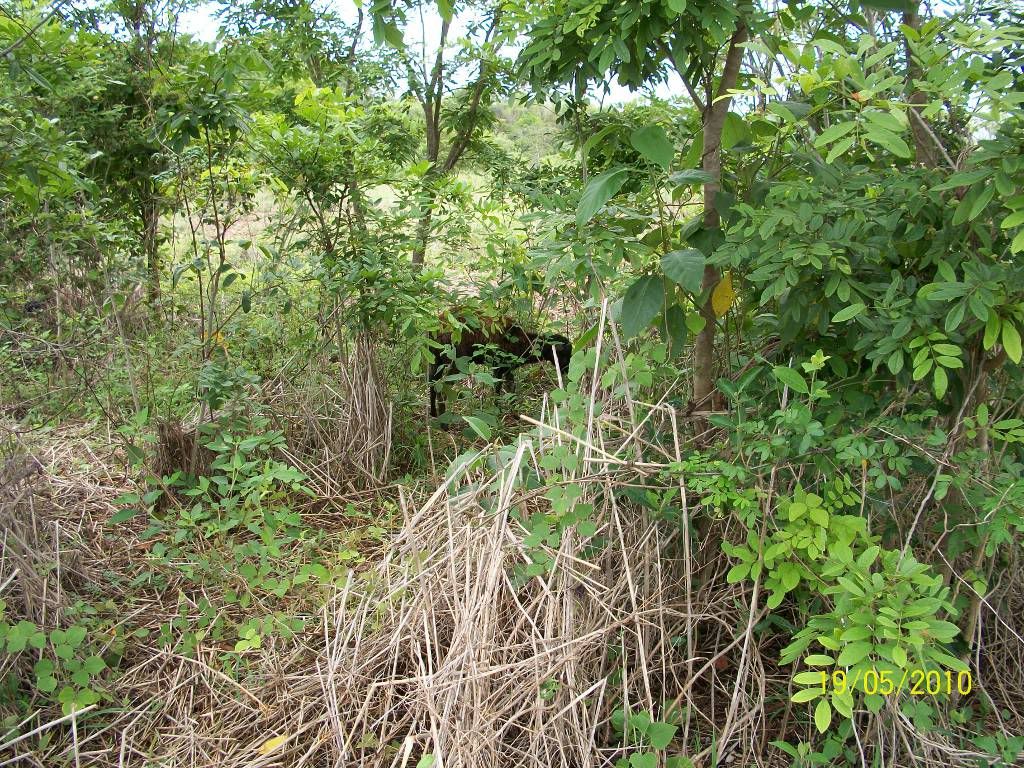
Even if they don't know the difference between brush and blue jeans.
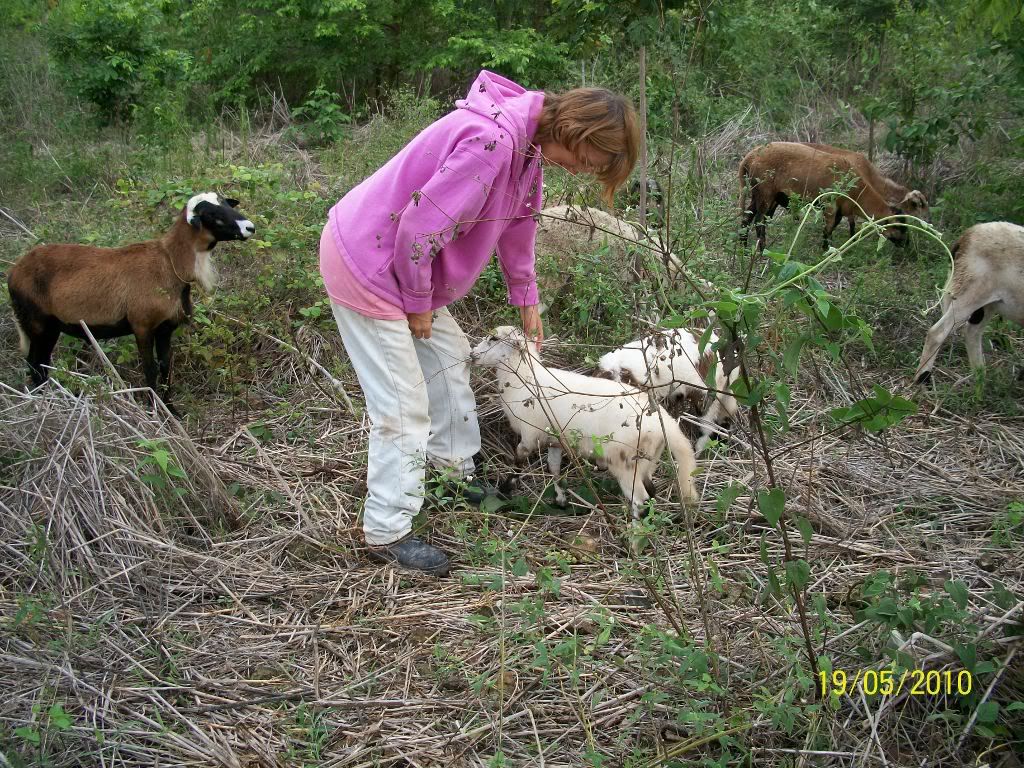
Goats might be more suited to this task. But we don't have any goats. Our tropical sheep seem to do as good a job as any goat could be expected to do.
As the sheep clear everything, they leave behind all the dead stuff. But now it is knocked down where it can rot faster and hold moisture in the soil. The sheep effectively mulch the paddock. And of course they manure it as well.
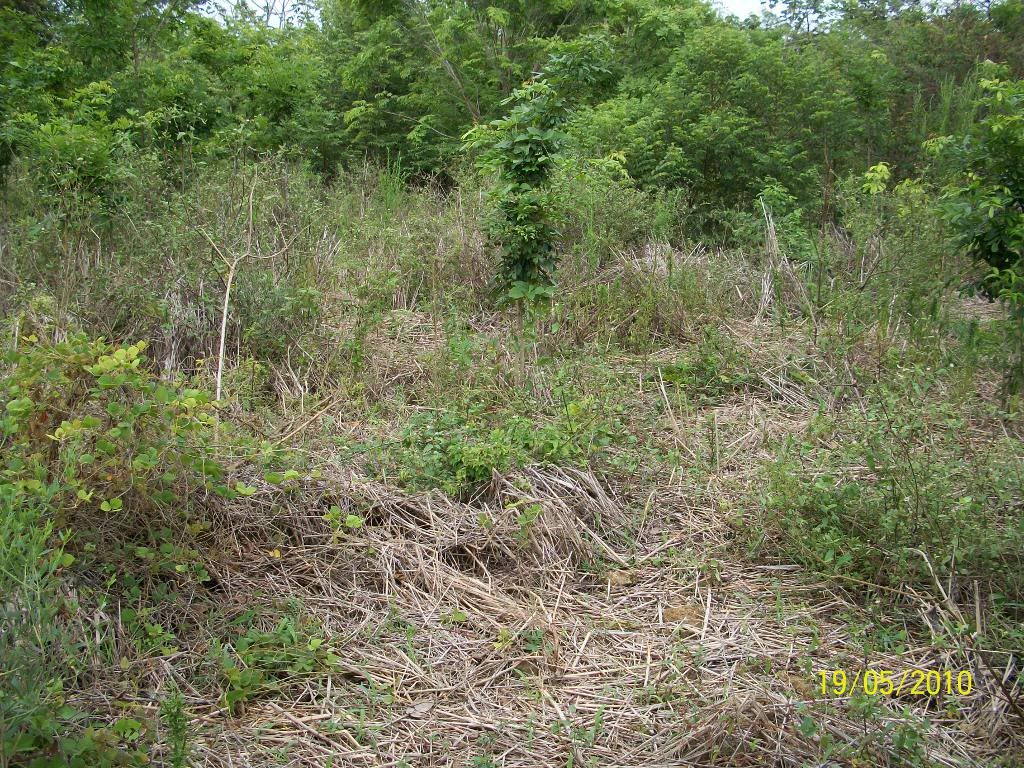
After a while they are moved to another paddock. Actually in our system, they eat up everything they are going to eat and escape. When they escape as a flock after having been in a new paddock for more than three or four days, we move them to another paddock.
The next paddock the sheep will go to is the first paddock that was fenced. They have been rotated through here before. But this paddock has had a rest of about two weeks and is greening up nicely.
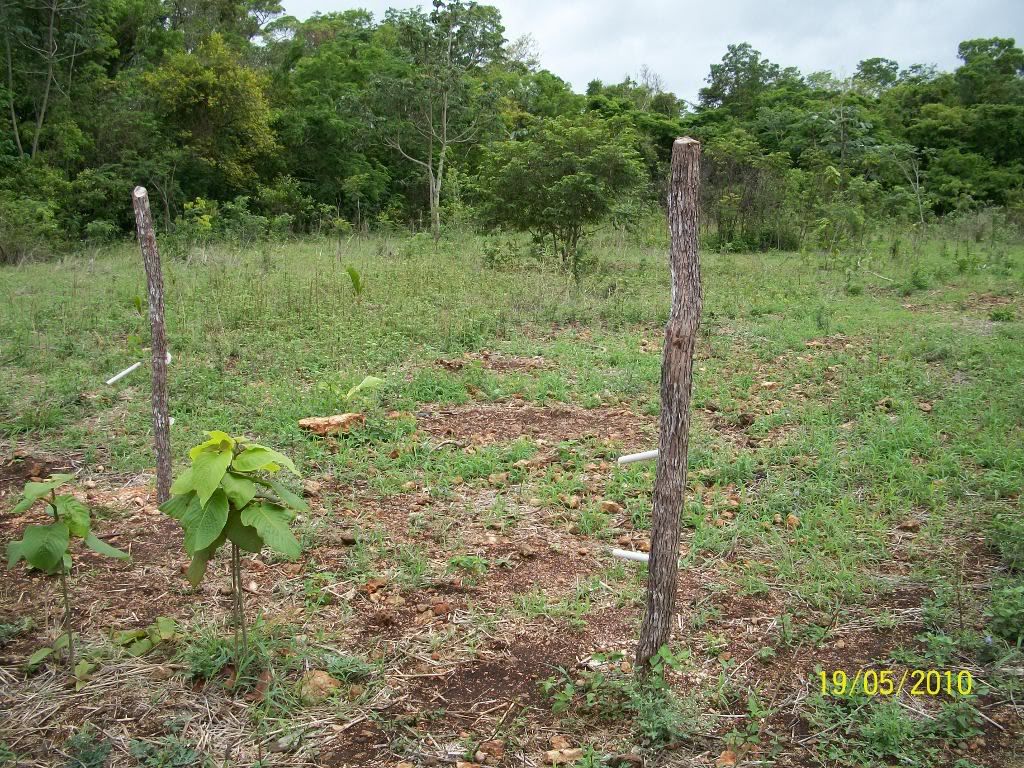
No comments:
Post a Comment